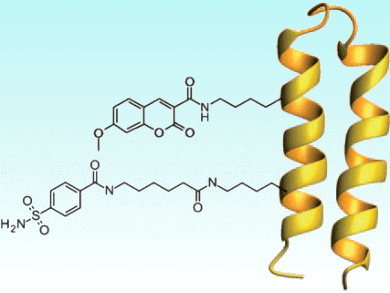Measurements in the complex biological environments of blood or serum rely on binder molecules that capture specific proteins at low concentrations in the presence of tens of thousands of other proteins. Lars Baltzer, Uppsala University, Sweden, and colleagues now show that a small organic molecule can be combined with a 42-residue polypeptide to form a specific, high-affinity binder for human carbonic anhydrase II (HCAII).
The synthetic binder showed a 30-fold increase in affinity for HCAII over HCAI, despite HCAI being present in five- to sevenfold excess over HCAII in human blood. The ability to discriminate between the two isoforms HCAI and HCAII suggests that chemically generated binder molecules offer improved performance over antibody-based binders which are currently the most common way of recognizing proteins in vivo.
Image: (c) Wiley-VCH
- Polypeptide Conjugate Binders that Discriminate between Two Isoforms of Human Carbonic Anhydrase in Human Blood
L. T. Tegler, K. Fromell, B.-H. Jonsson, J. Viljanen, C. Winander, J. Carlsson, L. Baltzer,
ChemBioChem 2011.
DOI: 10.1002/cbic.201000556




